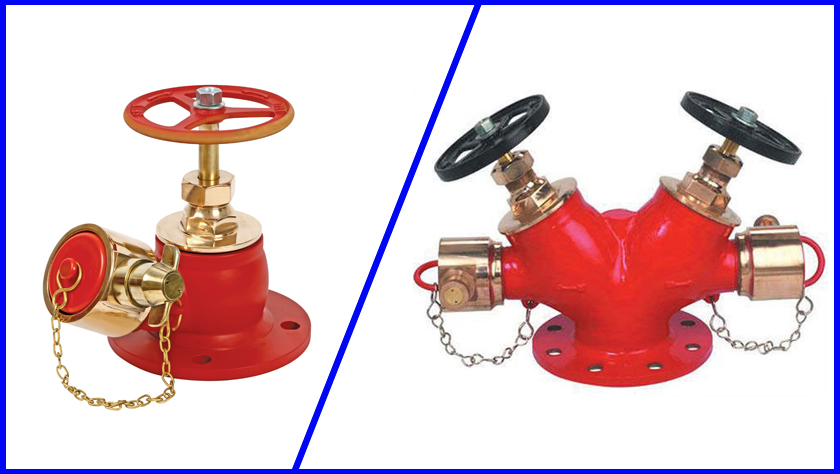Landing valves are something that is used for fighting fires and is provided on risers in buildings. These are usually located in staircase landings, allowing easy access to firefighters. A fire hydrant system is comprised of water supply pipework and valves, which can be connected to the hose of fire brigades for firefighting purposes. Hose reel drum and hose pipe are also effective in fighting fires inside a building. Both the hydrant valve and landing valve have similar designs, irrespective of the place installed. Flow Control Valve is a device that is used to control the flow of water by varying the size of the flow directed by a signal from a controller.
Difference between Hydrant Valves & Landing Valves:
Landing Valve
Landing valves are permanently charged with water using a pressurized supply. In simple words, they are globe valves, installed on hydrants. Also, a hose and a branch are connected to a coupling on it. Landing valves are installed in all the floors of a building where installation of hydrant valve is not possible and is then used by fire fighting department to extinguish the fire. The normal pressure of a landing valve is around 65 psi. In order to keep the nominal working pressure at the inlet of the hose reel, a pressure reducing valve is used in hose reel system.
Hydrant Valves
Fire Hydrant Valves are efficient in fighting large fires. They allow firefighters to extinguish the fire from a distance. Pumping facility is the most important part of the fire hydrant system. The main use of the pump is to pull the water from the reservoir and supply the same pressure to the hydrant points enabling firefighters to extinguish the fire effectively. In order to connect and operate fire fighting equipment from a hydrant valve, the pressure rating must be 100 psi (7 kg/cm2). But, it varies depending on the size of the building. The pressure of hydrant valves in large industrial complexes might range around 10-11 kg/cm2 while in small buildings it might range around 4-5 kg/cm2.
Fire sprinklers and flexible hoses can be effective in fighting small fires. Fire sprinklers discharge water when the effect of fire or extensive heat is detected and is effective in the early stage of fire. Flexible hoses act as a connection between the pump to the system. The standard length of a flexible hose is around 100 ft.
If you’re looking for fire fighting instruments, SKG PNEUMATICS INC might be the best choice, with more than 14 years of experience they deliver quality instruments of highest standards.










 FSC
FSC